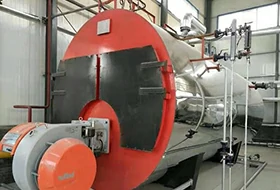
ডিসে. . 28, 2024 13:22 Back to list
steam furnace cost
Understanding the Costs of Steam Furnaces An In-Depth Analysis
In industrial applications and large scale heating solutions, steam furnaces play a pivotal role. They are essential for producing the steam required for various processes, including power generation, heating, and numerous manufacturing functions. However, the initial investment and ongoing operational costs associated with steam furnaces can be significant. This article explores the various factors influencing the cost of steam furnaces, helping businesses make informed decisions about their use.
Initial Purchase and Installation Costs
The first expense to consider when looking into steam furnaces is the purchase price. This initial outlay can vary widely based on factors such as the size, type, and brand of the steam furnace. Industrial steam furnaces are available in different configurations, including fire-tube and water-tube models. Fire-tube steam furnaces are often less expensive upfront but may have higher operational costs due to their efficiency. Conversely, water-tube models are typically more expensive initially but can offer significant savings in fuel efficiency over time.
Installation costs can also contribute to the overall expense. Proper installation is critical to ensure safety and efficiency. This may involve hiring skilled technicians, which can add to the upfront costs. Depending on the complexity of the installation and the site conditions, installation can range from a few thousand to tens of thousands of dollars.
Operational Costs
Once a steam furnace is up and running, continuous expenses come into play. Fuel costs are one of the most significant ongoing expenses. Steam furnaces can be powered by various fuels, including natural gas, propane, oil, or even biomass. The choice of fuel affects not just the cost, but also the furnace’s efficiency and environmental impact. For instance, natural gas tends to be the most economical in many regions, but fluctuations in fuel prices can significantly impact operating expenses.
Besides fuel, routine maintenance is another essential cost. Regular checks, cleaning, and replacements of parts such as burners and heat exchangers are necessary to keep the furnace operating efficiently and safely. Neglecting maintenance can lead to more severe issues down the line, potentially causing costly downtimes and repairs.
steam furnace cost

Efficiency and Energy Consumption
The efficiency of a steam furnace directly correlates with its operational costs. High-efficiency models may have a higher purchase price, but their energy savings can justify the initial investment. Modern steam furnaces are designed to maximize heat transfer and minimize energy wastage, boasting efficiencies that can exceed 90%. These efficiency gains can lead to substantial savings in fuel costs over the life of the furnace.
Additionally, incorporating technologies such as combustion control systems or energy recovery systems can further enhance a furnace's efficiency, influencing long-term operational costs. Businesses need to conduct a thorough analysis of their energy needs and the potential return on investment from upgrading to a more efficient model.
Environmental Considerations
While not a direct cost, the environmental impact of steam furnace operations can influence expenses indirectly. Government regulations and incentives for adopting cleaner technologies can vary by region, adding to the cost considerations of operating a steam furnace. Companies may face higher costs from emissions taxes or the need to invest in pollution control technologies to meet environmental standards.
Adopting energy-efficient and low-emission technologies can mitigate these costs while also enhancing the company’s reputation for sustainability, which is increasingly important in today’s market.
Conclusion
In summary, the total cost of owning and operating a steam furnace encompasses various factors, including initial purchase and installation costs, operational expenses, efficiency, and environmental considerations. Understanding these elements is crucial for businesses that rely on steam furnaces for their operations. By weighing the initial investment against potential ongoing savings and taking into account the importance of efficiency and sustainability, companies can make better-informed decisions that align with their financial and operational goals. In the long run, investing thoughtfully in steam furnace technology can provide substantial benefits, including improved efficiency, reduced operating costs, and positive environmental impacts.
-
High-Efficiency On-Off Steam Boiler for Reliable Heating Solutions Compare with Off Boiler Water Heaters & Steam Generators
NewsJun.24,2025
-
Best Steam Boiler Design PDF Free Design Calculation & Diagram Downloads
NewsJun.10,2025
-
Hot Boiler Water Heater Efficient Heating Solutions for Home & Commercial Use
NewsJun.10,2025
-
Steam Boiler Safety Devices High-Quality Protection Valves
NewsJun.10,2025
-
Ultimate Steam Boiler Checklist for Safety & Efficiency
NewsJun.10,2025
-
Optimal Hot Water Boiler Temperature Setting Guide
NewsJun.10,2025
Related PRODUCTS






















